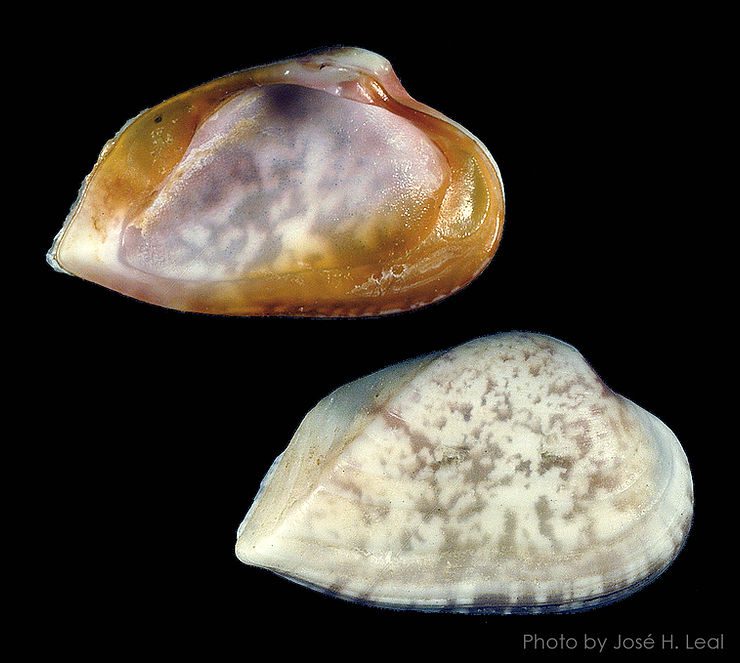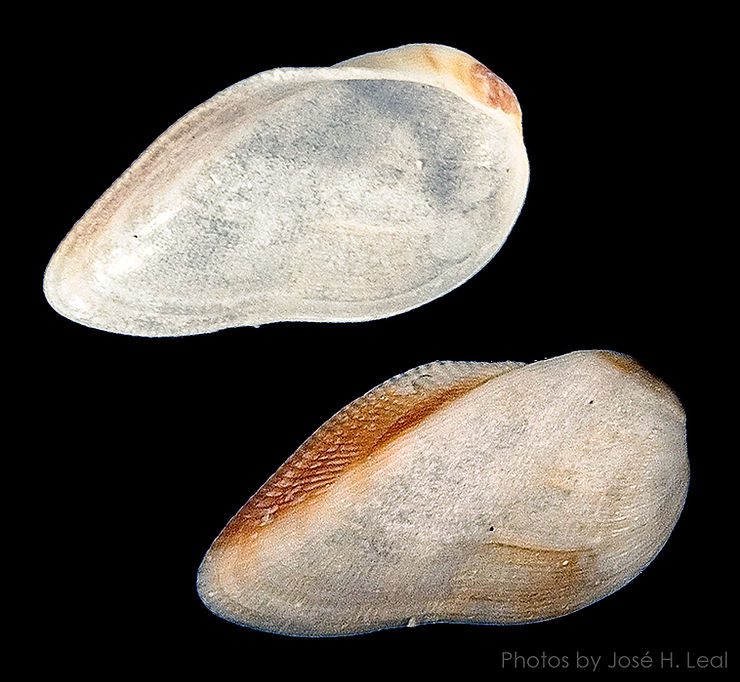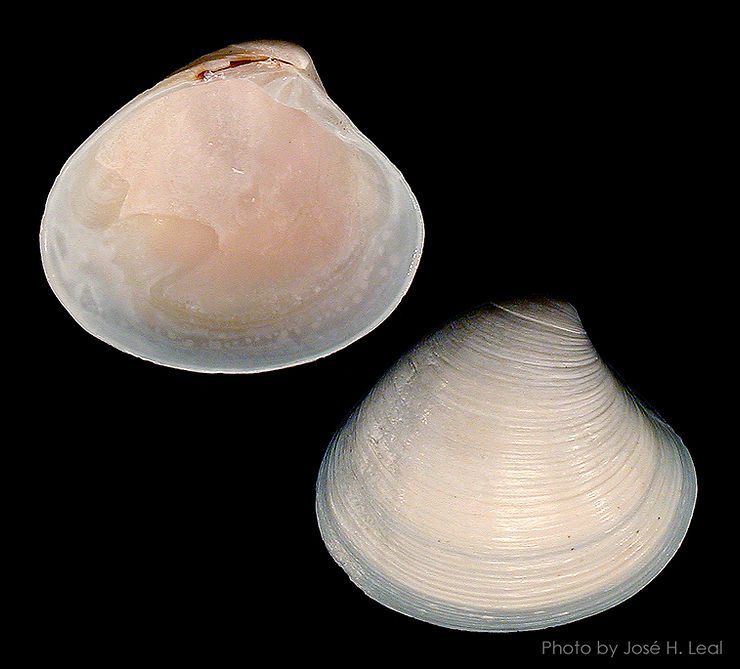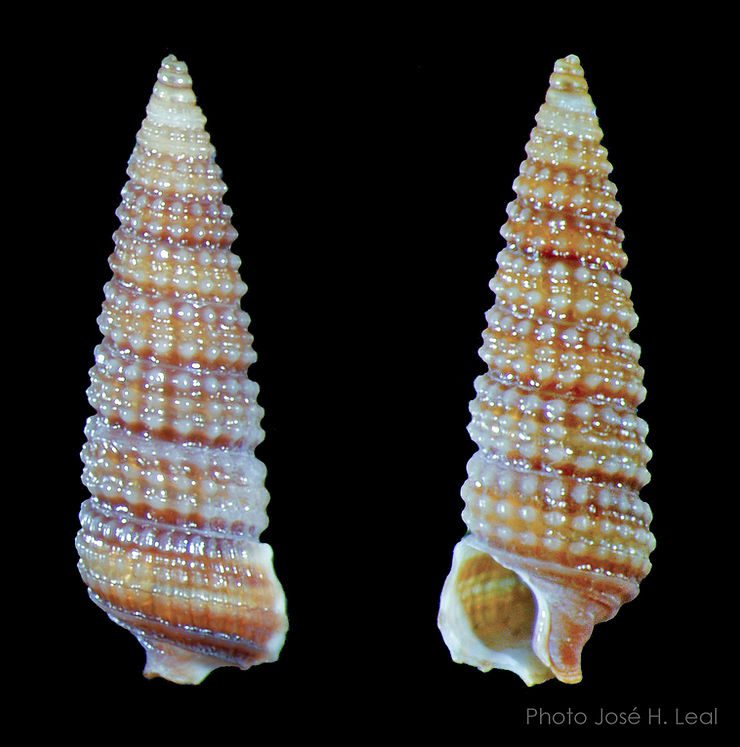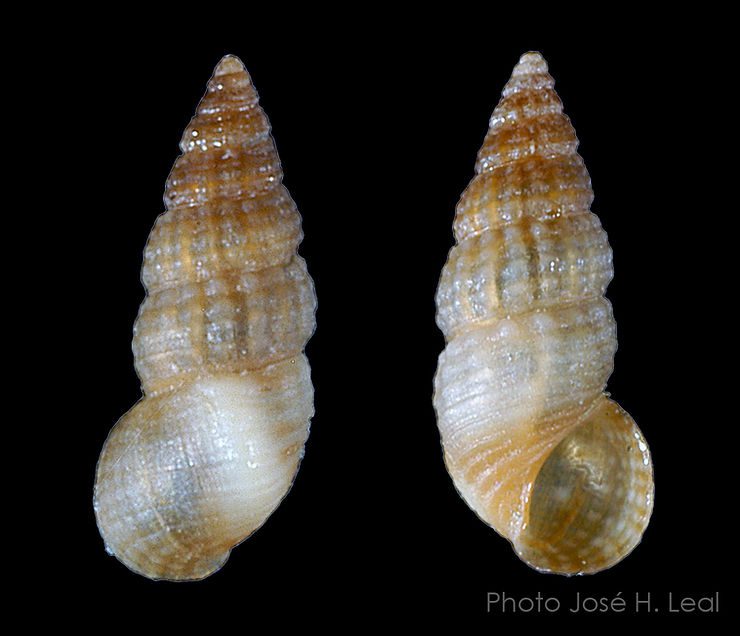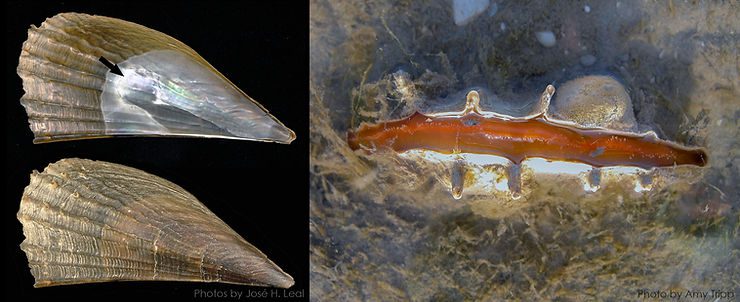
The Half-naked Pen Shell
The Half-naked Pen Shell, Atrina seminuda (Lamarck, 1819), is the rarest among the three species of pen shells found in Southwest Florida. It differs from the more common Stiff Pen Shell, Atrina rigida, by having its large adductor muscle scar well within the boundaries of the iridescent (nacreous) area inside shell valve (arrow on shell image). The Stiff Pen Shell has that scar “protruding” beyond those boundaries. In addition, the color of the mantle in the living Half-naked Pen Shell is orang
